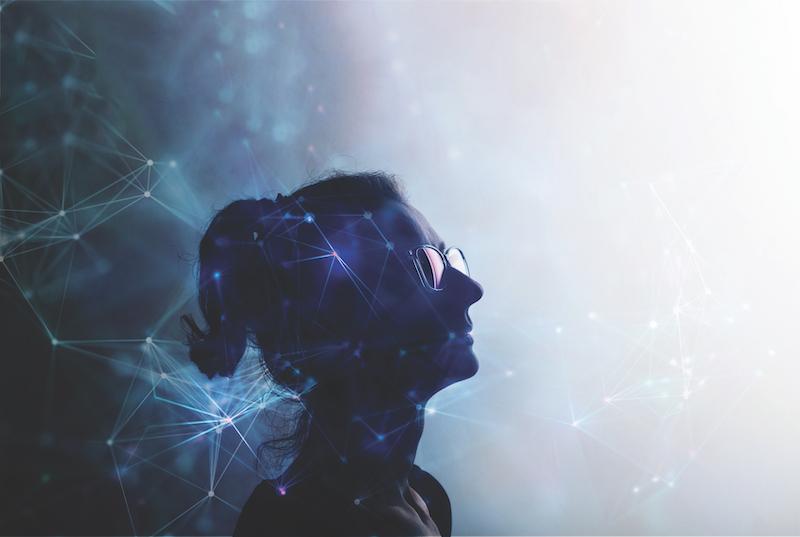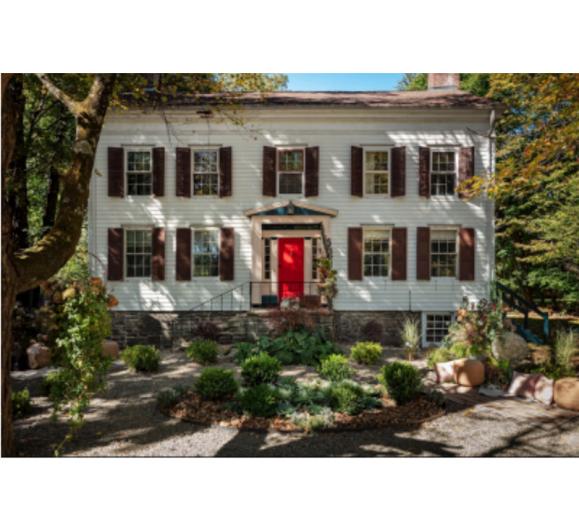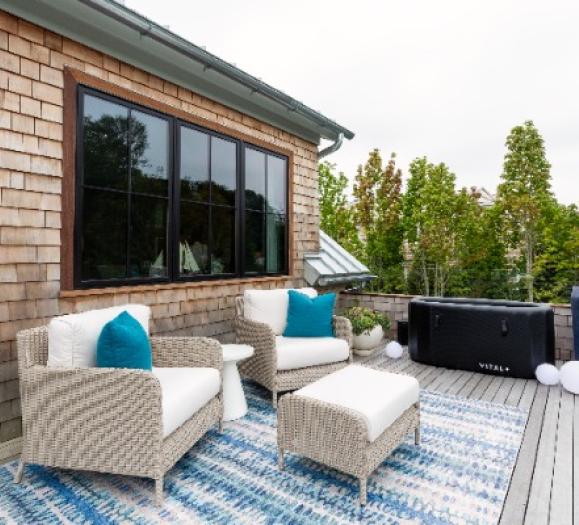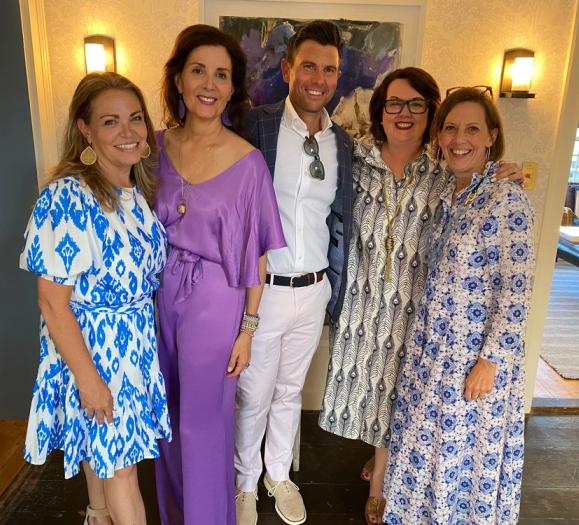Project Management, POS Systems
Los Angeles-based interior designer Erinn Valencich has run her own successful design firm for more than 16 years. She is the visionary behind StyleRow, a trade-only platform that enables designers, brands and showrooms to connect, collaborate with and accelerate projects. With StyleRow, tasks such as sourcing, workflow management, product discovery and purchasing are streamlined for all sides of the industry.
“At the core, what we’re doing every day as designers is finding product, selling that product to our clients, tracking those orders and communicating for commerce,” Valencich says. “All of that boils down to what I built with StyleRow — the ability to source product on one platform.”
Valencich says she thinks of StyleRow’s marketplace as a global digital design center, providing a platform for designers to connect with brands, remember their favorite products and discover new ones.
“It’s kind of like a tradeshow, but all year long,” she says. “Then, it’s the workflow tools and the project management software.”
StyleRow’s project management software is different from other platforms. It was built specifically for the technological nuances of the 2020s and includes not only team-to-team communication, but team-to-client as well. Clients are also able to leave feedback on a project within the portal, preventing email inbox clutter.
“When you enter in your comments, you have everything about a certain lamp [for example] and the client communication about that lamp at your fingertips,” Valencich says. “You’re not hunting through messages saying, ‘Oh gosh, did she want pink or blue?’ It’s all right there.”
This month, in addition to designers and clients, vendors will also be able to communicate on StyleRow, track vendor status and vendor payments. On the marketplace side, users will also be able to purchase product on the platform through those vendors directly.
StyleRow also recently launched Projects 2.0, a revamp of the PM software with more functionality. It will also have the ability to collect payments digitally.
“That’s a big feature designers have been asking for,” she says. “That goes to the trend of behavior. Three years ago, people didn’t think about digital client payments the way they do today. Why not collect payments where you’re already working?”
As one would imagine, Valencich wants StyleRow to be full of reputable companies with quality products. She also aims to keep the platform style agnostic, so designers or architects from all backgrounds are able to find what they’re looking for.
“I find a lot of marketplaces tend to be very style focused, so you only get Scandinavian modern on most of them,” she says. “But if you don’t want cold, hard, minimal lines, there’s nowhere to go. StyleRow has the ultra luxury, and we’re focused on growing across categories so we are that one-stop resource without having too many similar vendors.”
Users are also able to find highly customizable product on StyleRow that is bespoke, one-of-a-kind or made to order.
“Then you can also find great brands like Circle Lighting, Visual Comfort and Theodore Alexander,” she says. “Those products are always ready and in stock.”
At Leon & Lulu, a Metro Detroit-based lifestyle store with nearly 800,000 items, point of sale (POS) systems are non negotiable. Owner Mary Liz Curtin says using Myriad, a retail management, cloud-based software solution, has been a lifesaver when it comes to tracking her inventory. This robust software system manages sales, inventory, inventory control (including bar-coding), accounting, special order tracking, customer history and more.
“Our store is 15,000 square feet, and it’s full,” she says. “It would be absolutely impossible to manage this manually. For our furniture, which includes custom upholstery, and our other departments, Myriad confirms inventory, and marks down masses of things at once. We can put it in there and say ‘on December 26, everything for Christmas goes to 50 percent off.’ Then, everything in that department automatically goes down. It’s a huge time saver.”
Until the pandemic forced a heavier shift toward online shopping, the Leon & Lulu team ran its furniture department by hand.
“It really made all the difference to have,” she says. “It completely maintains our inventory, tracks it, makes it easy to do our taxes — all that stuff is in there. It also ensures you don’t run out of things, tracks your customers inventory and takes care of your customers as well as the merchandise on the floor.”
Curtin also uses this information to write reorders.
“Myriad is fully capable of writing a complicated order with everything specified in it, and it’s working well with our vendors, which is something I don’t enjoy in the gift program,” she says. “We can download images from vendors, and it offer more direct correspondence with the people we buy stuff from, which is a huge help.”
The system also tracks Leon & Lulu’s customers.
“When you come in, we know who you are, and we know what you bought,” Curtin says. “You don’t need a receipt if you want to return something. So it really acts as inventory management as well as customer relationship management.”
In the past, both an online and in-person customer could have the same item in their carts, making it difficult to get an accurate picture of inventory. An additional system called Octopus allows Shopify to speak to the store database, making the two systems work together.
“Now what we’re selling out of our store inventory is updated in real time” Curtin says. “That was a benefit of the pandemic: we got our ecommerce up and running. We look at it as more of a service for our customers rather than a sales channel.”
Even with software in place, however, Curtin urges other merchants to trust their innate sense of what product they’re low on, or what is selling quickly.
“You still have to go through your store with your very own eyeballs and say, ‘We don’t have enough of that. We’re low on that. This dog has been barking here for a long time,’” she says. “As much as you get on your reports and everything else, your basic, intimate knowledge of this stuff can’t be discouraged or discounted at any time.”
3D, AR & VR
With the world going more digital than ever before following the pandemic, it’s no surprise that interior designer Tanna Edler of Tanna by Design would have found her niche working with clients virtually from all over the world. Staying true to the times, Edler now offers room guidance services that help give her clients a virtual birds eye view of whatever they need — a floor plan layout, a 2D rendering, etc.
“Then, I just give them options,” she says. “I suggest where to set furniture, where to shop, where to get the look, and I provide a 30-minute consultation to help them choose the space. That’s where our room guide has been really advantageous, and that’s what we’re doing everywhere, all the time.”
Another popular service is Edler’s virtual conceptual design. This is often one of the first steps within an entire design service.
“I realized that that conceptual design can work anywhere,” she says. “A lot of people are taking advantage of that now. I’ll do renderings of four walls in 3D, all the details — materials, finishes, suggestions — everything basically in a virtual box. Then we do an hour-long consultation afterward to put all the pieces together.”
Most of these virtual materials live within Mydoma, a platform for interior designers that offers project management, automating, accounting and everything in between. Mydoma recently acquired eDesign Tribe, changing the name to Mydoma Visualizer.
“I went there to consolidate everything that I’m doing,” Edler says. “So when I’m talking about doing virtual design, from beginning to end when clients are receiving the actual goods, those live inside of Mydoma’s management tool, files and media.”
With Mydoma, users can also take a walkthrough of their space in virtual reality.
“When I’m finished with their rendering, my clients get virtual reality goggles in the mail from me,” she says. “Just put them on, and you can watch!”
Similarly, Pace Lighting recently incorporated 3D models alongside the Lighting Showroom Association’s (LSA) partnership with Levar, a provider of augmented reality (AR) and 3D “view in your space” technologies. Through the program, Levar provides LSA member showrooms and manufacturers with the ability to easily add immersive AR and 3D technology to the eCommerce and in-store shopping experience.
“Lighting is a unique and personal experience for shoppers — from where and at what height it will be placed at to how the details will accent a room,” says Lisa Bartlett, CEO at Pace Lighting and Director of the Lighting Showroom Association. “It is also challenging to envision a fixture without seeing it in the correct space. Levar has solved that with genuinely life-like 3D and AR lighting models that our manufacturers and showrooms can use to help drive higher conversion rates, reduce costly returns and provide a better customer experience.”
The LSA Augmented Reality program provides independent showrooms and manufacturers with the valuable technology they need to compete with big box stores, remaining a valuable place for contractors, architects and consumers to learn and shop for lighting and fans.
“Manufacturers sign up for the program, and put their products into this pipeline,” says Bartlett “At the moment, 50 or 60 products have had the 3D models created, and then put in the AR platform. And these are really excellent 3D models; it was really important to us that the artwork be very high quality and that the AR experience worked very well.”
One of the key parts of the project also ensured the technology was able to live on each showroom’s website.
“Some manufacturers are already working on this, but you have to go to their website to use it,” she says. “I don’t want to send my customers out to three different websites to try to use AR or look at their 3D models when they get home. Because what are the chances they’re going to return to my business to buy?”
On Pace Lighting’s homepage, for example, a quicklink reading “3D View in my Room” allows visitors to launch a 3D model of any capable product with a smartphone or device. According to Bartlett, this feature is becoming increasingly integral to how people shop.
“We want independent lighting showrooms to be able to have that experience too,” she says. “Since we’re doing this as a group, this tool flows out to all members.”
With Levar’s 3D tool allowing customers to offer product AR on their websites, it also allows smaller businesses to keep customers within the walls of their businesses.
“I want to keep customers within my business, my salespeople, my relationship, my brand and make it a seamless shopping experience for them, whatever they need from us,” Bartlett says.







